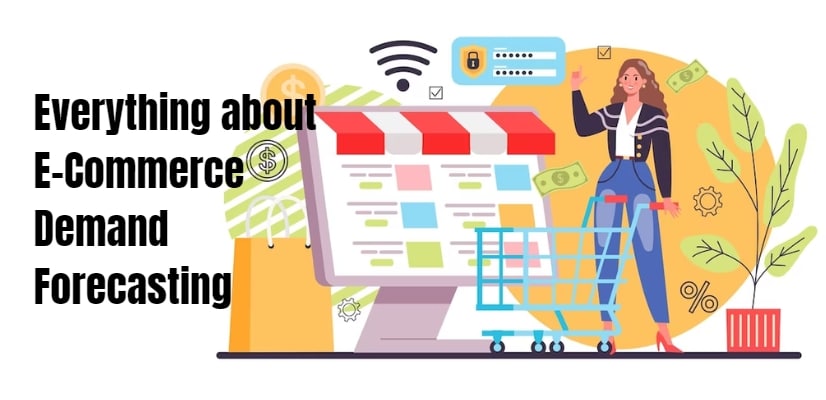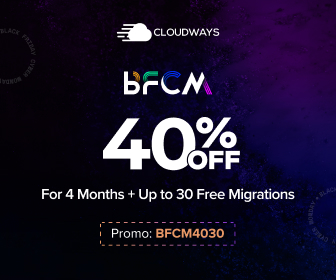E-Commerce Demand Forecasting?
Forecasting is a strategic effort that accounts for many factors in an attempt to create a future. Forecasting demand gets simple and easier when you understand what drives demand. Forecasting can provide both insight and confidence to drive your business performance successfully.
Demand forecasting is the process of using historical data to predict your customers' future demand for a product or service. The goal is to understand how your customers, capital and inventory interact and make better business decisions with these insights.
What is Demand Forecasting in e-Commerce?
Demand forecasting uses predictive analysis of historical data to estimate and predict customers’ future demand for a product or service. Demand forecasting helps the business make better-informed supply decisions that count the total sales and revenue for a future period.
Demand forecasting lets businesses optimize inventory by predicting future sales of their business. Analyzing historical sales data can make informed business decisions, from inventory planning and warehousing needs to running flash sales and meeting customer expectations.
6 Types of demand forecasting
1. Passive demand forecasting
In the Passive demand forecasting model, you use sales data from the past to predict the future. You should use data from the same season to predict sales in the future. The passive forecasting model only works if you have solid sales data to build on. Passive demand forecasting doesn’t require using statistical methods or studying economic trends.
2. Active demand forecasting
If your business is in a growth phase or if you’re just starting out, you can go with active demand forecasting. An active forecasting model takes into consideration your market research, marketing campaigns, expansion plans, economic outlook, growth projections for your market sector, and projected cost savings from supply chain efficiencies.
3. Short-term projections
Short-term demand forecasting is useful for managing your just-in-time supply chain. Looking at short-term demand let you adjust your projections based on real-time sales information. It helps you respond quickly to changes in customer demand.
4. Long-term projections
Long-term forecasts will make projections one to five years into the future. This forecasting model focuses on shaping your business growth. While your long-term planning will be based on sales data and market research.
Using this long-term forecasting technique, you can plan out your marketing, capital investments, and supply chain operations.
5. External macro forecasting
External macro forecasting incorporates trends in the broader economy. This projection shows how those trends will affect your goals. An external macro demand forecast can also give you direction for how to meet those business goals.
6. Internal business forecasting
Internal business demand forecasts review your business operations. Internal business forecasting is the type that will uncover limitations that might slow your business growth. Internal business demand forecasting is a helpful tool for making realistic projections on areas where you need to build capacity in order to meet expansion goals.
Importance of demand forecasting for business
1. Goals
Without an understanding of future demand, it is difficult for businesses to set their goals. Demand forecasting can help businesses identify trends and seasonal requirements so that they can plan accordingly.
2. Business decisions
Demand forecasting helps you with many business decisions. It can help them determine whether there is enough demand to justify the investment.
3. Growth
Demand forecasting can help businesses identify growth opportunities.
4. Human capital management
Demand forecasting can help businesses plan their business needs.
5. Financial planning
Demand forecasting can help businesses plan their financial charts.
Demand Forecast: Why does your eCommerce company need one?
1) Idea of requirement
Balancing supply and demand can be tricky for eCommerce businesses that typically hold a lot of stock. That stock has to be stored somewhere and the storage space has to be paid for. Demand forecasting lets you know how much stock you’ll need at any given time.
2) Optimise your pricing strategy
Rather than charging a slow price for products with fluctuating demand, forecasting gives you extra options in that you can drop the price when you know demand will be low, clearing out stock through a marketing strategy. You can also raise costs if you know people will badly want what you’re selling.
3) Satisfy your customers
Running out of stock doesn’t only mean you have no other way of making more money until the new stock comes in. Customers can also lose faith in your business if they find themselves getting what they need from you when they need it. With proper demand forecasting, you can always keep shoppers happy without overstocking your stocks
Importance of demand forecasting for eCommerce
1. Introduce new products
Using demand forecasting and product research methods, you can identify new products that will perform well in the market, and know the best time of year or month to start selling them.
2. Increase awareness among consumers
With more cash flow to invest in marketing and advertising, you can run more targeted campaigns to increase awareness among the consumers of your brand and drive more conversions.
3. Additional sales channels
Once you know the demand forecasting for one of your sales channels, you can replicate the success on other sales channels or even your own eCommerce website.
4. Balance risks
Demand forecasting can help you to identify, balance, and overcome the risks of growing your eCommerce business. It gives you the insight and knowledge to plan for starting new products, new competitors, recessions, and seasonal impacts, by ensuring that you’re investing enough time and money into good sellers.
Challenges the face e-commerce demand forecasting
Importance of historical data
Forecasting relies on your past data. While data activity is a good benchmark for future sales, it is not the only factor. Unfortunately, forecasting strategies often fail to consider the many other factors that will affect your demand in the future.
Fragmented business actions
eCommerce business implements several initiatives that may impact demand, and all of these different business actions are not always visible to every department of the company. Short-term cycles that include new products, sales, discounts, advertising, and social media marketing can impact demand massively.
The eCommerce market is rapidly growing and changing way of demand
Standard forecasting relies on monthly or yearly processes, but to keep up with the digital world, you must track stock-flow planning weekly and with two to four-week cycles.
Steps for Demand Forecasting in Ecommerce
1. Define goals
The first step in eCommerce demand forecasting is to clearly define your business goals. Before you can collect or analyze your data, you’ll need to establish what you want to achieve from the goal. Once you have identified your goals, you can set a timeline for reaching them.
2. Collect data
With your goals firmly in place, you can start collecting internal and external data. Internal data are related to your order history and product performance. External data typically comes from industry briefings, statistics and news articles.
3. Analyze data
After you’ve compiled all your relevant data, it’ll be time for you to analyse this data. You’ll want to comb through everything to find sales trends or demand patterns.
While it’s possible to analyze demand manually, it makes it easier to do so using inventory forecasting software. Analyzing your numerical or quantitative data is the only way to completely understand what’s going on with your inventory and anticipate what comes in future.
4. Forecast demand
There are primarily 2 categories for demand forecasting: qualitative and quantitative. But within each of these categories, there are several different demand forecasting methods you can choose from.
Qualitative forecasting method examples:
Market research
Informed opinion
Delphi method
Quantitative forecasting method examples:
Trend projection
Seasonal index
Naive method
Straight-line method
Time-series analysis
5. Make adjustments
When you generated your forecasts, you’ll still want to look over your estimates before officially placing your purchase order for stocks. By checking your work, you can spot outliers in your data or correct any errors in your calculations. With your predictions data confirmed, you can then adjust your operations to align with these forecasts.
Summary
Business forecasting consists of techniques used to predict changes in business data, such as sales, expenditures, profits and losses. Business forecasting aims to develop the best strategies based on these informed predictions. Demand forecasting helps businesses make decisions that affect business from inventory planning to supply chain optimisation.
FAQ's
There are various ways businesses can forecast demand. All forecasting models leverage data and analytics over specific periods of time.
A demand forecast can be carried at three levels, namely, the macro level, industry level, and firm level.
Forecasting let businesses set reasonable and measurable goals based on current and historical data.






